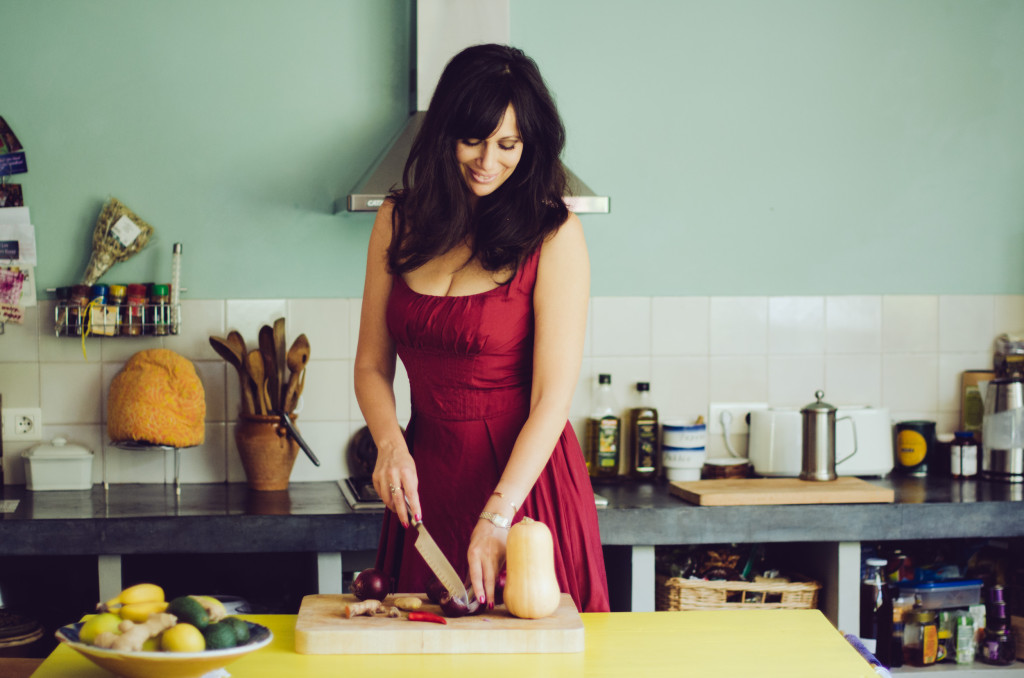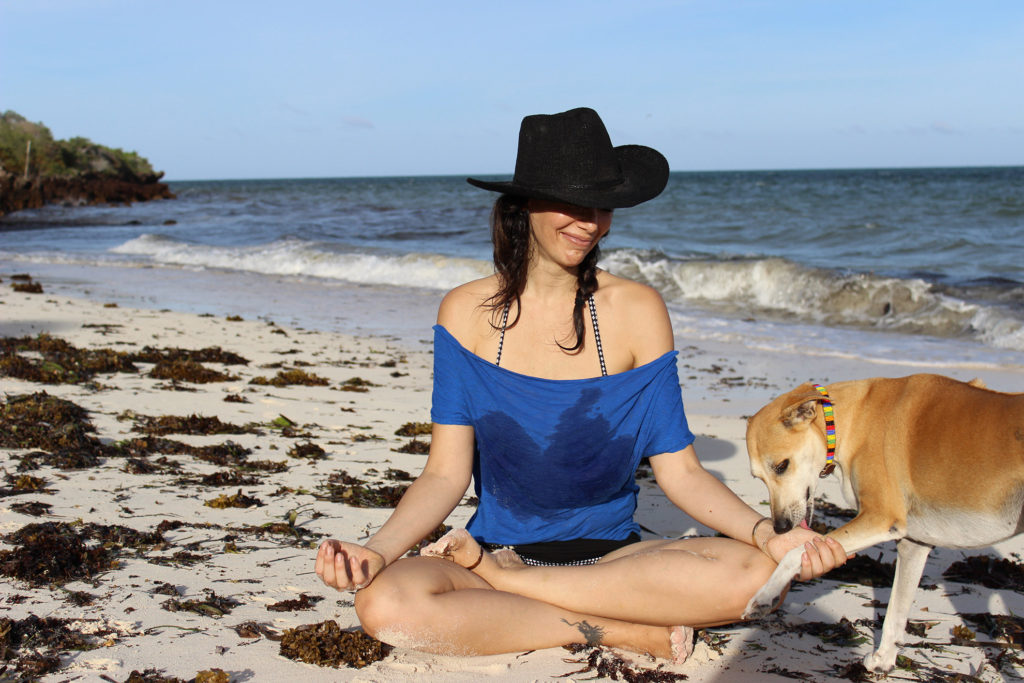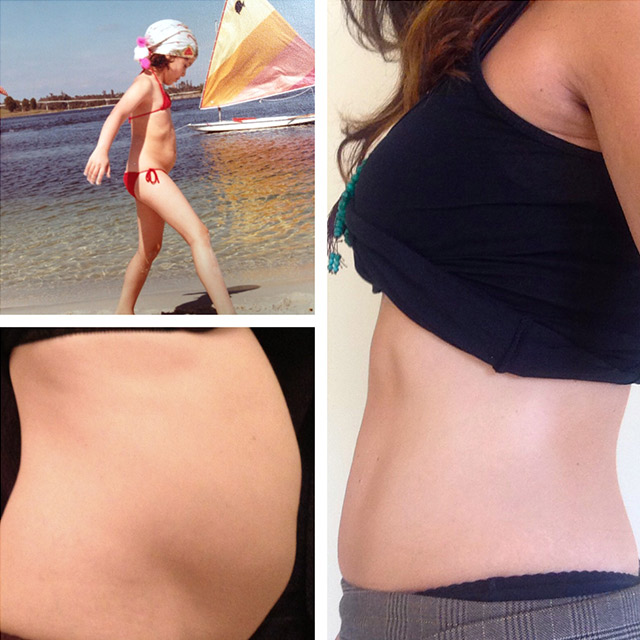
Finally diagnosed with histamine intolerance (HIT) in London in 2010, I wholeheartedly embraced the traditional hardcore elimination approach, low histamine diet and even more elimination of all foods that bothered me (fructose, salicylates, histamines oh my!). I was soon struggling to feed myself on just five foods, a spindly, skeletal figure of 52kg/114lbs on a 1.78m/5’10 frame, devoid of all joy in life, quietly nursing a hatred towards my body and all foods I was no longer able to eat.
The biggest slap in the face was that I was STILL experiencing a ton of intense symptoms in addition to following a dietary protocol that made life a misery.
Realising something was horribly amiss, I set out to cram in as much histamine, mast cell, inflammation, nutrition and biology information as I possibly could into the precious few hours not spent working my day job, blogging and cooking. And it paid off. Because I finally realised that what I had been doing to my body in these last few years was pretty much setting me up for a lifetime of misery.
I had a hunch that whatever happened to break down my body years ago was now in the past, but that I was still somehow in a horrible cycle of inflammation, lack of nutrition, and stress, and it was all slowly killing me.
Well, maybe not so slowly…I still felt that my anaphylactic episodes warranted further investigation, and in March 2013 my condition was clarified as as Mast Cell Activation Syndrome by Dr Matito (under Dr Luis Escribano) in Toledo, Spain.
Immediately prescribed mast cell stabilising meds and antihistamines, I decided not to go down that route again. I had after all only recently managed to kick all meds to the curb: antihistamines, anti-inflammatories, benzodiazepines, antidepressants, sleeping pills, mood stabilisers, diuretics, pain killers, antibiotics, antibacterials, and quite a few more. So I put my newly hard won nutritional/histamine/mast cell research to work, embracing the fridge and fields as my medicine cabinet instead (along with a heaping dose of positivity, meditation and yoga).

Just over a year on a high nutrient, histamine balanced diet rich in antihistamine and anti-inflammatory foods gave me my life back. I believe that elimination has its place, for a very limited time, but the goal should always be to re-introduce high nutrient foods as soon as possible (or not eliminate them in the first place). I found that the more I robbed my body of vital nutrients, the less able it was to function normally, the worse my histamine/mast cell induced inflammation became, and the more fearful my body and brain became of all foods, not just inflammation causing ones.
I do not believe that a standard low histamine diet, will, under any circumstances, heal what
ails us. To focus on histamine or salicylates or fructose, is, to quote the Brits, not to see the wood for the tress. Ultimately we’re dealing with inflammation. A low histamine diet consisting of freshly deep fried sweet potato fries with hamburgers with yeast and ketchup free buns, 3000 calorie carob bars with white sugar, root vegetable “potato” chips, gluten free cup cakes, tomato free wheat pasta, etc, while snubbing bananas, avocado, grapefruit and other higher histamine, far higher nutrient foods, just ‘aint gonna do it sadly. This lifestyle is about cleaning your body from the inside out. Going low histamine but eating the same old crappy stuff is barely going to help control symptoms, let alone heal.



No one sums this up better than the incredible Dr Oz Show favorite, Oprah appearing, New York Times bestselling author (a few times over), Dr Fuhrman, in a quote he was kind enough to share with me for this blog:
“You can’t put this problem in a vacuum. Such as avoiding histamine containing foods, on a standard deficient and toxic diet. The body works in conjunction with thousands of complicated chemical reactions, and only with superior nutrition can the histamine sensitivity be better controlled. So exposure to thousands of phytochemicals and even to a low dose of histamine in their diet is good, not bad and can offer hope of getting better over the years to come.”
– DR. FUHRMAN
Couldn’t have said it better myself!
Please note: many of the studies referenced on this blog refer to in vitro, meaning conducted in a test tube. There is no guarantee that in vitro results can be replicated in humans. Much of the research is conducted using extracts at far greater dosage than we could possibly get from a human diet, unless we walk around with a feeding trough around our necks. Nonetheless, I have found the results of these studies to be a good general guideline when deciding on which antihistamine and anti-inflammatory foods to add to my diet, but your own results will vary. Please remember, even antihistamine and anti-inflammatory foods can hurt us, please always exercise caution and consult a medical practitioner before adding new foods.
The Anti-cookbook and all liquid Anti-Detox Book don’t treat any conditions, but feature a plethora of the high nutrient antihistamine and anti-inflammatory ingredients that have been instrumental in helping me feed myself on a limited diet. The Anti-cookbook features a six page list of antihistamine and anti-inflammatory foods and comes in regular and Paleo.
The Low Oxalate Cookbook features antihistamine and anti-inflammatory rich recipes.
Don’t miss the Low Histamine Beauty Survival Guide for non-toxic beauty tips, the skinny on histamine releasing (mast cell degranulating) beauty ingredients, antihistamine and anti-inflammatory beauty alternatives and the top brands natural brands I’ve found.
Take a peek at my other low histamine and antihistamine cookbooks for more high nutrient recipes
